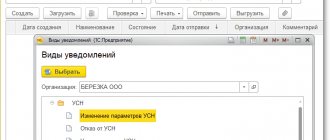Land tax legislation
The main document regulating land tax issues is the Tax Code of the Russian Federation, in which Chapter is devoted to this tax. 31. However, due to the fact that this tax is a local level tax, for its introduction and abolition, municipalities adopt their own regulations. With the same legal acts, local authorities have the right to make independent decisions on a number of issues regarding the calculation and payment of land taxes (clause 2 of Article 387 of the Tax Code of the Russian Federation). They can:
- introduce a system of additional tax benefits;
- determine and differentiate tax rates, provided that they do not exceed those established by the Tax Code of the Russian Federation;
- determine the procedure and deadlines for paying taxes for legal entities.
If the local authority has not established its rates, then the rates established by the Tax Code of the Russian Federation are applied (clause 3 of Article 394 of the Tax Code of the Russian Federation):
- 0.3% - for lands for agricultural, residential, dacha purposes or related to security tasks of the Russian Federation (subclause 1, clause 1, article 394 of the Tax Code of the Russian Federation);
- 1.5% - for all other lands (subclause 2, clause 1, article 394 of the Tax Code of the Russian Federation).
ATTENTION! Tax officials will be informed about the misuse of agricultural land. And if inappropriate use is established, then the standard tax rate of 1.5% is applied.
Who pays or the subject of taxation
The subject of taxation means a person or legal entity on whom the tax code has assigned corresponding obligations for regular payments. The principles for recognizing a person or company as a subject of taxation are disclosed in Article 19 of the Tax Code of the Russian Federation.
It is believed that a taxpayer can participate in existing relations with tax organizations independently , through a legal or authorized representative. Also, a subject can have resident or non-resident status. To find out what the land tax rate is, click here.
Residents are those taxpayers who permanently reside in the country and conduct business here. Even a foreign citizen can become one if he lives on the territory of the Russian Federation for 183 days, plus another year after the expiration of the period.
Non-residents do not reside permanently in the country, which means that only their income received in the Russian Federation is subject to taxation.
The tax status of a subject can be determined using the following criteria:
- place of residence (or company address in the case of a legal entity);
- presence test (or incorporation in the case of a legal entity);
- citizenship for individuals persons;
- agreements between tax authorities;
- place of company management.
And if it is not difficult to decide on the subject, then the remaining elements of taxation can raise many questions.
Attention: in this section we do not affect the categories of people who have land tax benefits and land tax benefits for pensioners.
Land tax object
The object of taxation of land tax is defined in Art. 389 Tax Code of the Russian Federation. This tax is imposed on all land plots located in regions that have adopted a law introducing a land tax. In this case, the following areas are not subject to taxation:
- withdrawn from circulation or limited in circulation;
- intended for logging;
- located under apartment buildings.
The tax is calculated based on the cadastral value of the plot (clause 1 of Article 390 of the Tax Code of the Russian Federation), established as of January 1 of the year for which the calculation is made (clause 1 of Article 391 of the Tax Code of the Russian Federation). If the right to a plot arose in the current year, then its value for tax purposes is accepted as determined as of the date of cadastral registration.
During the year, the value of the plot for tax purposes does not change. The exceptions are the following cases:
- identifying a technical error in cadastral registration - then the tax is recalculated starting from the year in which such an error was made;
See details here .
- changes in the value of a plot when considering controversial situations - then the tax is recalculated from the year the application for change in value was submitted, but not earlier than the date of changes in the cadastral registration information.
our material about what to do if the characteristics of a land plot have changed
If a plot is located within several regions, then each part of it is subject to land tax according to the rules established by the law of the corresponding region (clause 2 of article 389 and clause 1 of article 391 of the Tax Code of the Russian Federation). Moreover, the share of the cost of a plot for each region depends on the share of its area in this region.
Tax calculator - Calculation of land tax and property tax for individuals, calculated based on the cadastral value
The procedure for calculating and paying land tax is established by the legislation of the Russian Federation on taxes and fees (Chapter 31 of the Tax Code of the Russian Federation).
Land tax is established and enforced by the Tax Code of the Russian Federation and regulatory legal acts of representative bodies of municipalities and is obligatory for payment in the territories of these municipalities.
When establishing a tax, the representative bodies of municipalities (legislative (representative) bodies of state power of the federal cities of Moscow and St. Petersburg) determine tax rates within the limits established by this chapter, the procedure and deadlines for paying the tax.
When establishing a tax, regulatory legal acts of representative bodies of municipalities (laws of federal cities of Moscow and St. Petersburg) may also establish tax benefits, grounds and procedure for their application, including establishing the amount of tax-free amounts for certain categories of taxpayers.
The tax base is defined as the cadastral value of land plots recognized as an object of taxation.
More information about registering a land plot with cadastral registration
For clarification of some issues related to determining the location of the boundaries of a land plot when registering it with the state cadastral register, see Letter of Rosreestr dated February 16, 2016 N 19-00221/16.
The tax period is a calendar year. Reporting periods for taxpayers - organizations and individuals who are individual entrepreneurs are recognized as the first quarter, second quarter and third quarter of the calendar year (Article 393 of the Tax Code of the Russian Federation).
Taxpayers of land tax (Article 388 of the Tax Code of the Russian Federation):
- organizations and individuals who own land plots recognized as an object of taxation in accordance with Article 389 of the Code, on the right of ownership, the right of permanent (perpetual) use or the right of lifelong inheritable possession, unless otherwise established by this paragraph.
In relation to land plots included in the property constituting a mutual investment fund, management companies are recognized as taxpayers. In this case, the tax is paid from the property that makes up this mutual investment fund.
Organizations and individuals are not recognized as taxpayers in relation to land plots,
- held by them under the right of gratuitous temporary use or
- transferred to them under the lease agreement.
Object of taxation by land tax (Article 389 of the Tax Code of the Russian Federation):
- land plots located within the municipality (federal cities of Moscow and St. Petersburg), on the territory of which the tax has been introduced.
The following are not recognized as objects of taxation:
- land plots withdrawn from circulation;
- land plots limited in circulation, which are occupied by especially valuable objects of cultural heritage of the peoples of the Russian Federation, objects included in the World Heritage List, historical and cultural reserves, objects of archaeological heritage;
- land plots from the forest fund lands;
- land plots limited in circulation, occupied by state-owned water bodies as part of the water fund.
Tax base of land tax (Articles 390, 391 of the Tax Code of the Russian Federation):
The tax base is defined as the cadastral value of land plots recognized as an object of taxation in accordance with Article 389 of this Code.
The tax base is determined for each land plot as its cadastral value as of January 1 of the year that is the tax period.
In relation to a land plot formed during a tax period, the tax base in a given tax period is determined as its cadastral value as of the date of registration of such a land plot for cadastral registration.
The tax base for a land plot located on the territories of several municipalities is determined for each municipality (federal cities of Moscow and St. Petersburg). In this case, the tax base in relation to the share of a land plot located within the boundaries of the corresponding municipal entity (federal cities of Moscow and St. Petersburg) is determined as a share of the cadastral value of the entire land plot, proportional to the specified share of the land plot.
The tax base is determined separately in relation to shares in the common ownership of a land plot, in respect of which different persons are recognized as taxpayers or different tax rates are established.
Taxpayer organizations (or individual entrepreneurs) determine the tax base independently on the basis of information from the state real estate cadastre about each plot of land owned by them or the right of permanent (perpetual) use (the right of lifelong inheritable possession).
The tax base for each taxpayer who is an individual is determined by the tax authorities on the basis of information submitted to the tax authorities by the authorities carrying out cadastral registration, maintaining the state real estate cadastre and state registration of rights to real estate and transactions with it.
The tax base is reduced by a tax-free amount of 10,000 rubles per taxpayer on the territory of one municipal entity (federal cities of Moscow and St. Petersburg) in relation to a land plot owned, permanent (perpetual) use or lifetime inheritable possession for a number of categories of taxpayers (Article 391 of the Tax Code of the Russian Federation).
Tax rate of land tax (Article 394 of the Tax Code of the Russian Federation):
Tax rates are established by regulatory legal acts of representative bodies of municipalities (laws of the federal cities of Moscow and St. Petersburg) and cannot exceed:
1) 0.3% in relation to land plots:
- classified as agricultural lands or lands within agricultural use zones in populated areas and used for agricultural production;
- occupied by the housing stock and objects of engineering infrastructure of the housing and communal complex (except for the share in the right to a land plot attributable to an object not related to the housing stock and objects of engineering infrastructure of the housing and communal complex) or acquired (provided) for housing construction;
- purchased (provided) for personal subsidiary plots, gardening, market gardening or livestock farming, as well as summer cottage farming;
- limited in circulation in accordance with the legislation of the Russian Federation, provided to ensure defense, security and customs needs;
2) 1.5 percent in relation to other land plots.
It is allowed to establish differentiated tax rates depending on the categories of land and (or) the permitted use of the land plot.
Tax benefits for land tax (Article 395 of the Tax Code of the Russian Federation):
Exempt from taxation:
- organizations and institutions of the penal system of the Ministry of Justice of the Russian Federation - in relation to land plots provided for the direct performance of the functions assigned to these organizations and institutions;
- organizations - in relation to land plots occupied by public state highways;
- religious organizations - in relation to land plots owned by them on which buildings, structures and structures for religious and charitable purposes are located;
- all-Russian public organizations of disabled people (subject to a number of conditions);
- organizations of folk artistic crafts - in relation to land plots located in places of traditional existence of folk artistic crafts and used for the production and sale of folk artistic crafts;
- individuals belonging to the indigenous peoples of the North, Siberia and the Far East of the Russian Federation, as well as communities of such peoples - in relation to land plots used to preserve and develop their traditional way of life, farming and crafts;
- organizations - residents of the special economic zone, with the exception of the organizations specified in paragraph 11 of this article - in relation to land plots located on the territory of the special economic zone, for a period of five years from the month of the emergence of ownership of each land plot;
- organizations recognized as management companies in accordance with the Federal Law “On Innovation” - in relation to land plots included in the territory of innovation and provided (acquired) for the direct performance of the functions assigned to these organizations in accordance with the specified Federal Law;
- shipbuilding organizations that have the status of a resident of an industrial-production special economic zone - in relation to land plots occupied by buildings, structures, and structures for production purposes owned by them and used for the construction and repair of ships, from the date of registration of such organizations as a resident of a special economic zone economic zone for a period of ten years.
0
When does the obligation to pay for land arise?
The obligation to pay land tax arises for the taxpayer (organization or individual) when an object of taxation arises, formalized under the terms of one of the following rights (clause 1 of Article 388 of the Tax Code of the Russian Federation):
- property;
- use without a specified period;
- possession by right of inheritance.
If a plot of land has a right to use free of charge or for a fee under a lease agreement, then it is not subject to taxation (Clause 2 of Article 388 of the Tax Code of the Russian Federation).
Organizations themselves calculate the tax separately for each plot, using information about the established cadastral value.
We talked about how to calculate the tax if the cadastral value of the land is not determined here .
Read about the specifics of organizations reporting on land tax in the material “For some taxes, declarations may not be submitted .
For plots of land owned by individuals, tax calculations are carried out by the tax authorities. If an individual does not receive a notification from the Federal Tax Service to pay land tax, then since 2015 he is obliged to inform the tax inspectorate about this (clause 2.1 of Article 23 of the Tax Code of the Russian Federation). If this obligation is ignored, the Federal Tax Service will impose penalties in the amount of 20% of the unpaid tax amount.
The form for reporting undeclared property can be downloaded here.
How the tax is calculated by individual entrepreneurs, read the article “Land tax for individual entrepreneurs since 2015”.
For a plot of land, the right to which exists for less than a full year (i.e., the right to a plot of land arose or disappeared in the current year), the tax is calculated taking into account a coefficient that takes into account the proportion of months the taxpayer actually has a plot of land in the current year (clause 7 of Article 396 Tax Code of the Russian Federation). Moreover, if the right to the plot arose before the 15th day of the month, then the month is considered full, and if after the 15th, then the month is not taken into account in the taxation period.
The legislative framework
Since land tax is characterized by many features and individual rules for establishing and paying, its legislative regulation is carried out by a separate chapter of the Tax Code, namely Chapter. 31 Tax Code of the Russian Federation. The articles contained in this chapter address, in particular, the following issues:
- taxpayers;
- objects of tax establishment;
- tax base and the procedure for its determination;
- tax and reporting periods;
- possible benefits;
- the procedure for calculating the amount payable and advance payments;
- features of preparation and submission of the declaration.
It is worth noting that the Tax Code, as the main legal act, is the federal regulator regarding land payments. In addition to it, legislative regulation is also carried out by a number of local regulations, which are developed and approved in individual constituent entities of the Russian Federation.
Local authorities can independently establish certain rules for paying taxes (change the rate, provide benefits), but this should be done only in accordance with the provisions of the Tax Code of the Russian Federation.
Features of taxation of common land
A land plot can be in common ownership: joint or shared. In this case, the tax is paid by each owner separately from the value of his share (clause 2 of Article 389 of the Tax Code of the Russian Federation):
- For shared ownership, the value of the share will be determined in proportion to its part in the total cost of the site (clause 1 of Article 392 of the Tax Code of the Russian Federation).
- For joint ownership, these shares will be the same (clause 2 of Article 392 of the Tax Code of the Russian Federation).
How to find out the land tax debt , we tell you in this material.
Possible benefits for land tax
The application of benefits to an object of taxation by land tax is possible upon receipt of a plot for a specific purpose, provided that it is used for this purpose (Article 395 of the Tax Code of the Russian Federation). The provision of benefits must be documented (clause 10, article 396 of the Tax Code of the Russian Federation).
Organizations have the right to take advantage of benefits on sites intended for placement of:
- institutions of the penal system;
- public roads;
- religious buildings;
- public organizations of disabled people and companies with their participation;
- organizations of folk arts and crafts;
- special and free economic zones;
- objects of innovation.
Benefits for public organizations of disabled people and companies with their participation are applicable with certain restrictions on the types of activities and the number of disabled people in them. For special and free economic zones, the possibility of applying benefits is limited in duration.
Individuals in relation to the object of taxation can use only one benefit: for plots intended for leading the traditional way of life by small peoples of the Russian Federation (clause 7 of Article 395 of the Tax Code of the Russian Federation).
At the same time, legislators of municipalities have the right to establish additional benefits and differentiated land tax rates.
Results
Land tax is imposed on all land plots in the region where this tax is levied. The Tax Code of the Russian Federation establishes a list of tax-free lands. The amount of the fee depends on the cadastral value of the site.
Legislators are preparing a number of changes to the land tax:
- “The State Duma adopted in the first reading a bill introducing a “tax on unfinished construction””;
- “The Ministry of Finance is preparing changes to the property tax and land tax.”
Follow all the innovations in our Land Tax section.
You can find more complete information on the topic in ConsultantPlus. Free trial access to the system for 2 days.






